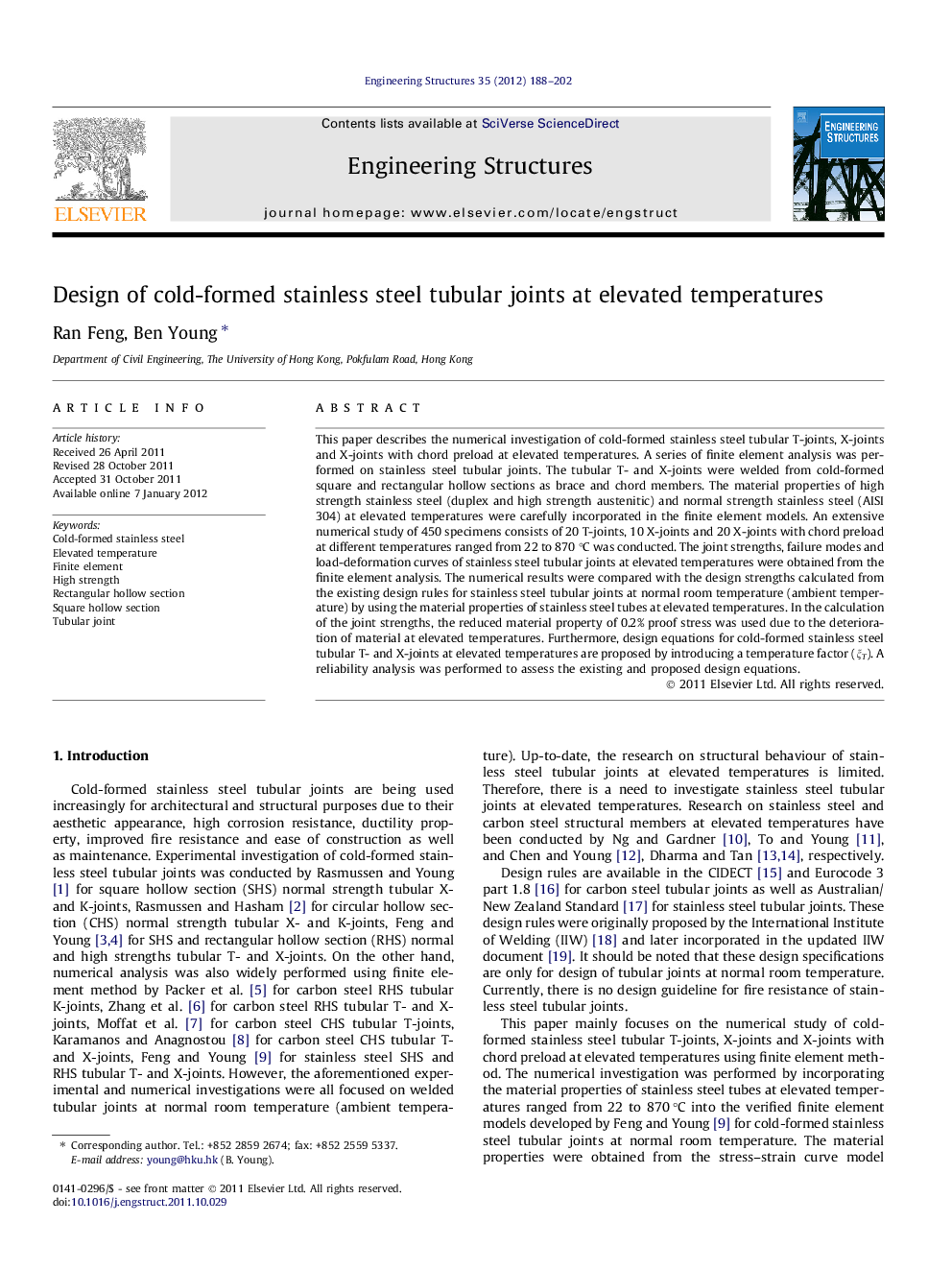| Article ID | Journal | Published Year | Pages | File Type |
|---|---|---|---|---|
| 267583 | Engineering Structures | 2012 | 15 Pages |
This paper describes the numerical investigation of cold-formed stainless steel tubular T-joints, X-joints and X-joints with chord preload at elevated temperatures. A series of finite element analysis was performed on stainless steel tubular joints. The tubular T- and X-joints were welded from cold-formed square and rectangular hollow sections as brace and chord members. The material properties of high strength stainless steel (duplex and high strength austenitic) and normal strength stainless steel (AISI 304) at elevated temperatures were carefully incorporated in the finite element models. An extensive numerical study of 450 specimens consists of 20 T-joints, 10 X-joints and 20 X-joints with chord preload at different temperatures ranged from 22 to 870 °C was conducted. The joint strengths, failure modes and load-deformation curves of stainless steel tubular joints at elevated temperatures were obtained from the finite element analysis. The numerical results were compared with the design strengths calculated from the existing design rules for stainless steel tubular joints at normal room temperature (ambient temperature) by using the material properties of stainless steel tubes at elevated temperatures. In the calculation of the joint strengths, the reduced material property of 0.2% proof stress was used due to the deterioration of material at elevated temperatures. Furthermore, design equations for cold-formed stainless steel tubular T- and X-joints at elevated temperatures are proposed by introducing a temperature factor (ξT). A reliability analysis was performed to assess the existing and proposed design equations.
► Numerical study was performed on stainless steel tubular joints at elevated temperatures. ► Four hundred and fifty specimens at different temperatures ranged from 22 to 870 °C was performed. ► Reduced material property was used to calculate the joint strengths. ► Existing design rules are unconservative for T- and X-joints failed by chord face. ► Proposed design rules are generally more accurate than the existing design rules.
